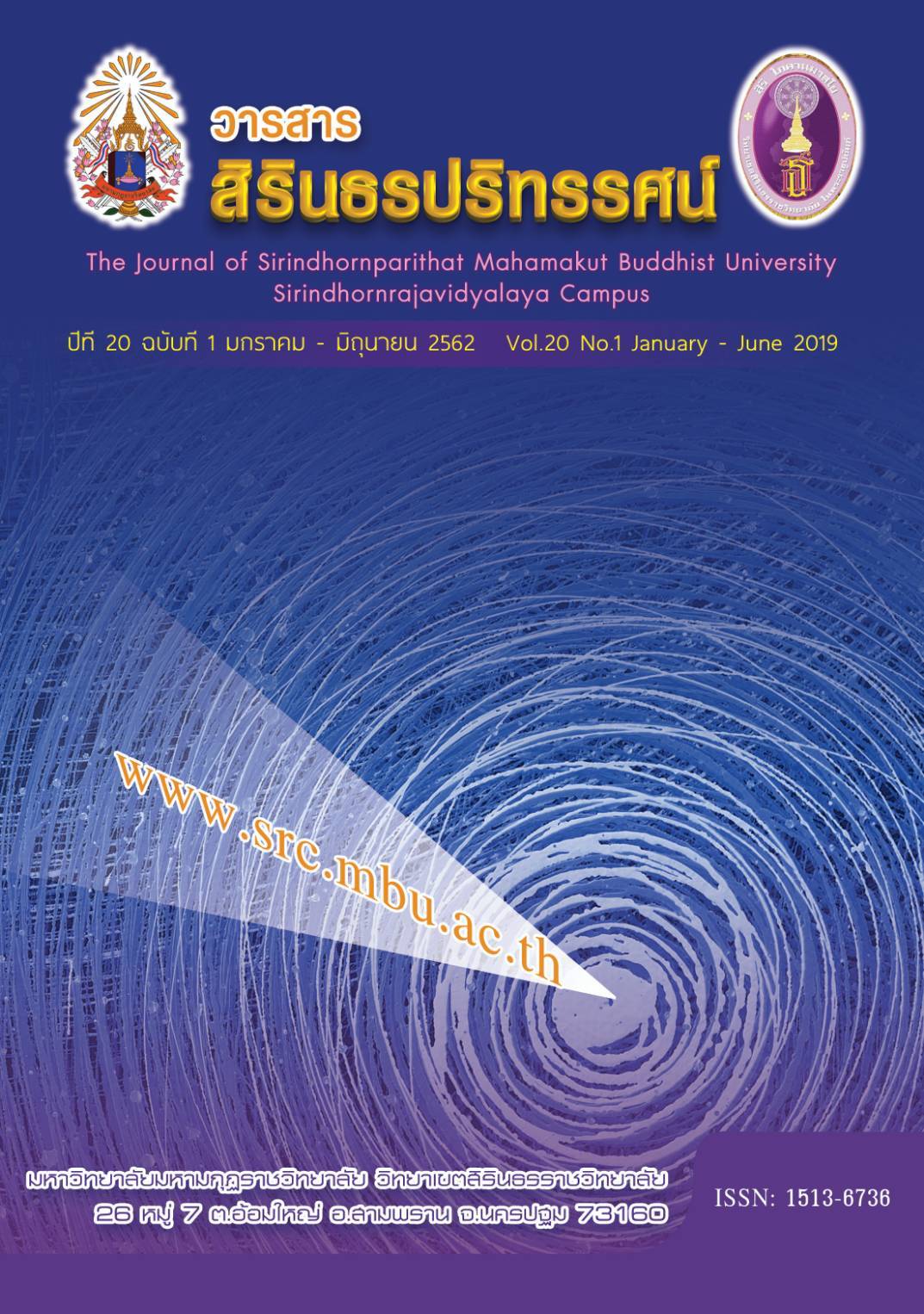BEHAVIOR OF CONSUMERS TO USE SERVICE OF BEAUTY SALON IN MAECHAI DISTRICT, PHAYAO PROVINCE
Keywords:
Beauty Salon service, consumer behaviorAbstract
This research aims to 1) Study consumer behavior in choosing beauty salon services in Maechai Disrtict Phayao Province 2) To study the relationship between demographic characteristics and consumer behavior in Maechai Disrtict PhayaoProvince. The exact population is not known at the time of the survey Therefore, using the sample size method by using the W.G.Cochran formula for the sample of 400 people. The research found that 1) Consumer behavior in choosing to use beauty salon services also found that, 36.4 percent of consumers used beauty salon services twice a month and 34.9 percent used service three times a month, 54.4 percent spent 301-500 baht each and 24.4 percent spent more than 500 baht each, 55.6 percent at consumer came to pool service and 17 percent came to use hair cut sevice, 40.9 percent of consumer came to use service because of fair price and 32.4 came to used service because of credible beautieian, 44.6 percent of consumer used service at 12.01-15.00 o’cloek and 21.4 percent of then used service before 12.00 o’cloek 2) Relationship between demographic characteristics and consumer behaviors at the statistically significant level 0.05 except Sex was not associated with the behavior of consumers who came to the salon. The reason for choosing salon. Age did not correlate with the behavior of consumers who came to the beauty salon. Status did not correlate with the behavior of consumers who came to the beauty salon. The level of education did not correlate with the behavior of consumers who came to the salon. The reason for choosing salon. The budget for the salon.The relationship with the behavior of consumers who come to the beauty salon. Monthly income was not correlated with the behavior of consumers who came to the beauty salon in terms of time spent in beauty salon.
References
ชาย จี้คําฟู. (2555). การสื่อสารการตลาดที่มีผลต่อการตัดสินใจซื้อเครื่องใช้ไฟฟ้าของผู้บริโภคใกรุงเทพฯ.
วิทยานิพนธ์ศิลปศาสตรมหาบัณฑิต มหาวิทยาลัยรามคําแหง.
บุณฑริกา นันทิพงศ์. (2555). พฤติกรรมผู้บริโภคกับการตัดสินใจซื้อสินค้าผ่านระบบอินเตอร์เน็ต ในเขต
กรุงเทพมหานคร. วิทยานิพนธ์บริหารธุรกิจมหาบัณฑิต มหาวิทยาลัยรังสิต.
พัชรภรณ์ พงษ์อารี. (2558).ส่วนประสมการตลาดในมุมมองของผู้รับบริการร้านเสริมสวยในเขต เทศบาลเมือง
ปทุมธานี. มหาวิทยาลัยราชภัฎวไลยอลงกรณ์ในพระบรมราชูปถัมภ์.
ยุวดี ภู่สําลี. (2556). การศกษาพฤติกรรมและแนวโน้มในการใช้เครื่องใช้ไฟฟ้าและอุปกรณ์อิเล็กทรอนิกส์
ของครัวเรือนในเขตกรุงเทพมหานคร. งานวิจัยมหาวิทยาลัยธุรกิจบัณฑิต.
รังสิมา เป็ดทอง. (2555). ปัจจัยที่มีผลต่อการตัดสินใจซื้อสินค้าและบริการผ่านพาณิชยกรรมอิเล็กทรอนิกส์
ของพนักงานบริษัทเอกชนในกรุงเทพมหานคร. วิทยานิพนธ์ศิลปศาสตรมหาบัณฑิต มหาวิทยาลัย
รามคําแหง.
ศิริวรรณ เสรีรัตน์ และคณะ.(2552). ความหมายของพฤติกรรมผู้บริโภค. จาก Kotler, Philip. (1999). Marketing Management.2552.
อรวรรณ วิวัฒนากันตัง. (2553).พฤติกรรมการใช้บริการร้านเสริมสวยของสตรีในเขตเทศบาลเมืองพัทยา.
บริหารธุรกิจมหาบัณทิต.สาขาวิชาการตลาด.มหาวิทยาลัยราชภัฎ.
สำนักงานสถิติแห่งชาติ. (2559).รายงานผลจำนวนสถานประกอบการและรายรับกิจกรรมด้านบริการการเสริม
สวยปี 2548 – 2552 การสำรวจธุรกิจทาการค้าและธุรกิจบริการ พ.ศ. 2559
สำนักงานทะเบียนข้อมูลทะเบียนราษฏร์. (2559).ที่ว่าการอำเภอแม่ใจ จังหวัดพะเยา.
Schiffman, Leon G. &Kanuk, Leslie Lazar. (2007). Consumer Behavior. 9th ed.
Englewood.Cliffs,NewJersey:Prentice-Hall.
Weiss and Garson. (1990). Good Governance and Global Governance: Conceptual and ActualChallenges". Third World Quarterly. Vol. 22 (5),
Downloads
Published
Issue
Section
License
บทความที่ได้รับการตีพิมพ์เป็นลิขสิทธิ์ของ มหาวิทยาลัยมหามกุฏราชวิทยาลัย วิทยาเขตสิรินธรราชวิทยาลัย
ข้อความที่ปรากฏในบทความแต่ละเรื่องในวารสารวิชาการเล่มนี้เป็นความคิดเห็นส่วนตัวของผู้เขียนแต่ละท่านไม่เกี่ยวข้องกับหาวิทยาลัยมหามกุฏราชวิทยาลัย วิทยาเขตสิรินธรราชวิทยาลัย และคณาจารย์ท่านอื่นๆในมหาวิทยาลัยฯ แต่อย่างใด ความรับผิดชอบองค์ประกอบทั้งหมดของบทความแต่ละเรื่องเป็นของผู้เขียนแต่ละท่าน หากมีความผิดพลาดใดๆ ผู้เขียนแต่ละท่านจะรับผิดชอบบทความของตนเองแต่ผู้เดียว




